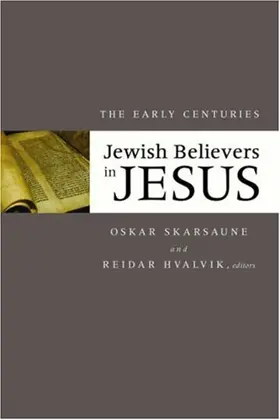

Jewish Believers in Jesus: The Early Centuries
Pages
930 pages
Publisher
Baker Academic
Published
8/30/2007
ISBN-13
9781565637634
Jewish Believers in Jesus: The Early Centuries examines the formative first five centuries of Christian history as experienced by individuals who were ethnically Jewish but who professed faith in Jesus Christ as the Messiah. Offering the work of an impressive international team of scholars, this unique study examines the first five centuries of texts thought to have been authored or edited by Jewish Christians, including the Old Testament Pseudepigrapha, the New Testament Apocrypha, and some patristic works. Also considered are statements within patristic literature about Jewish believers and uses of oral traditions from Jewish Christians. Furthermore, the evidence in Jewish, mainly rabbinic, literature is examined, and room is made for a judicious sifting of the archaeological evidence. The final two chapters are devoted to an enlightening synthesis of the material with subsequent conclusions regarding Jewish believers in antiquity.
Reviews
cholars examine Greek, Latin, and Syriac literary evidence on the presence of Jewish believers in Europe and the Middle East during the first five centuries of the Church.
[Full Review]
On a mosaic of the church of St. Sabina in Rome, built under Pope Celestine (422–432), there are two female figures next to a great historical inscription. Below one figure we can read: eclesia [sic] e circumcisione; below the other figure: eclesia e gentibus. Above the former is Peter, while above the latter is Paul. From this composition and from many others in Rome we can learn that there was in the fifth century still a certain notion that the church was originally divided in two. There were two brands of Christianity: a church of Jewish origin and one of Gentiles. And if there is a notion that there was a church of Jewish origin, one certainly realized that Judaism was the bedrock of Christianity. What was this church of Jewish origin, and how did this church fit into the process of emerging Christianity? In scholarly literature of the last decennia, some important studies have appeared dealing with the emerging Christianity from different angles. Discussing the relations between Judaism and Christianity, James Dunn wrote The Parting of the Ways: Between Christianity and Judaism and Their Significance for the Character of Christianity (London: SCM, 1991), in which he tries to describe in an overview the way in which Christianity emerged as a religion distinct from its mother religion.
[Full Review]

